Pigeon. For those of us in North America, the word brings to mind a very specific bird, Columba livia.
They scavenge in city parks, poop on statues, and generally make a nuisance of themselves. And even the most ardent, loving birder would be hard-pressed to describe them as anything but boring. But the familiar (and perhaps misaligned) rock dove is not the only pigeon around.
There are nearly 350 species of pigeons and doves around the world, all in the Columbidae family. They live in habitats as diverse as sandy deserts, savanna grasslands, and rainforests. Some spend their entire lives in the canopy, others are mostly terrestrial. Some are found across multiple continents, while others are endemic to single islands in the Pacific. And they come in a kaleidoscope of strange colors, from neon pink to rainbow iridescence.
With so many cool species to choose from, it’s hard to play favorites. But we’ve done our best to bring you 10 of our favorite pigeons and doves from around the world.
-
Nicobar Pigeon
Caloenas nicobarica | Small Indo-Pacific Islands
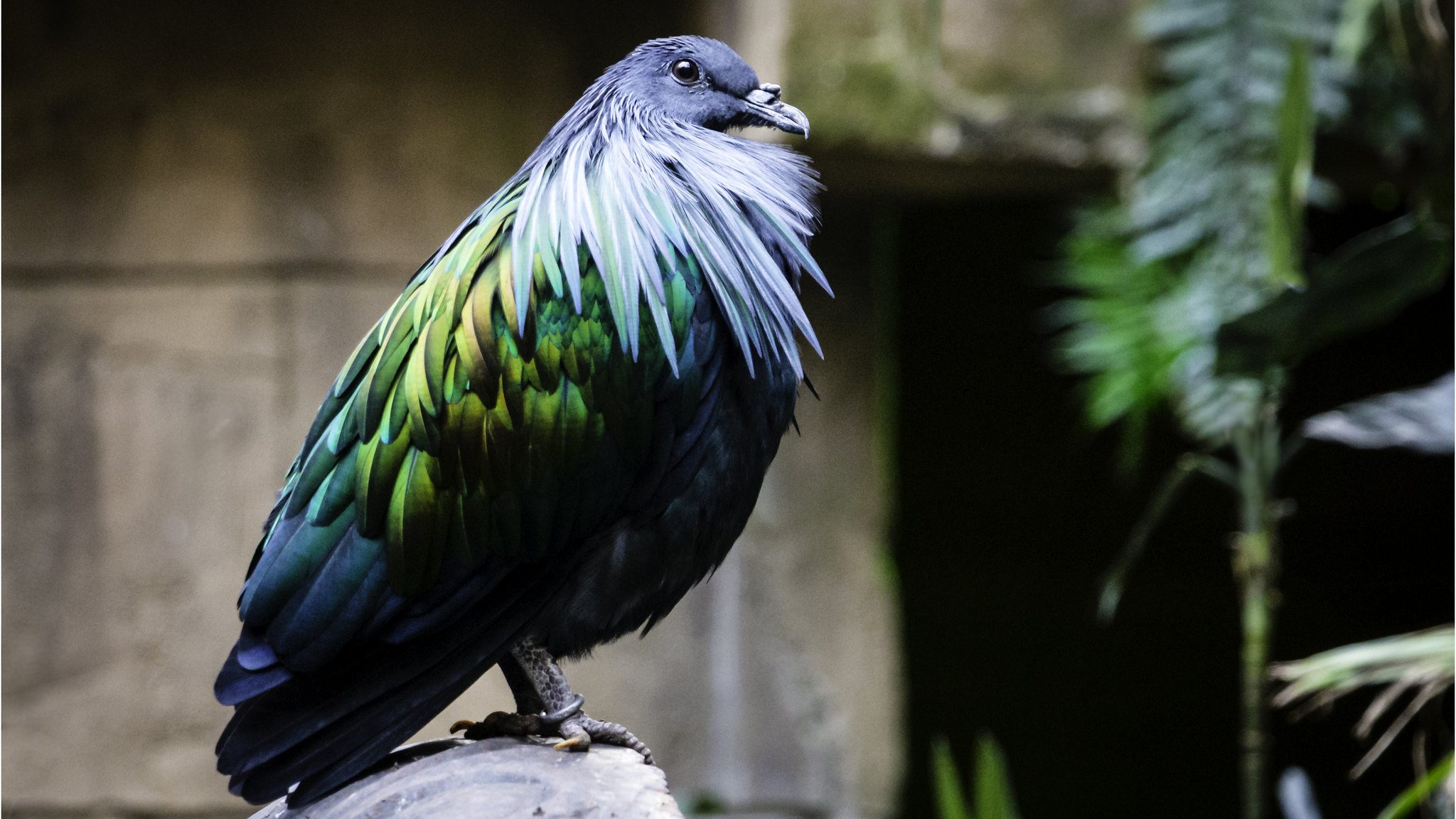
A nicobar pigeon. © scratch-media / Flickr Nicobar pigeons are downright fabulous. They have a ridiculous ruff of feathers around their necks, and iridescent, rainbow-colored plumage. But their real claim to fame is that they are the closest living relative to the dodo.
Nicobar pigeons are found on small, densely forested islands offshore of India, the Southeast Asian Peninsula, Indonesia, the Philippines, Micronesia, and the Solomon Islands. They spend most of their time on the ground, foraging for seeds and fruits. Unlike other pigeons and doves, Nicobar pigeons tend to fly in single file, one after the other, when they travel from island to island in search of food. Scientists speculate that their bright white tail feathers act as a light reflector when it’s dark out, helping the birds stick together as they fly.
-
Superb Fruit-Dove
Ptilinopus superbus | Australia + Tropical Pacific

A superb fruit dove perched high in the canopy. © OzinOH / Flickr Yes, this is a real bird, and no, I don’t understand those colors either. Superb fruit-doves are one of those bird species that look like your kid’s art projects: males are a random mish-mash of magenta, burnt orange, blue-gray and green, complete with a dark black sash across the belly. Females are mostly green, with black spots and a small, dull-purple patch on the top of the head.
These unmistakable birds are found in tropical forests in Australia, New Guinea, the Solomon Islands, and parts of Indonesia. They crawl through the canopy searching for fruit and berries, and are remarkably difficult to see, despite their bright colors.
-
Orange Dove
Ptilinopus victor | Fiji
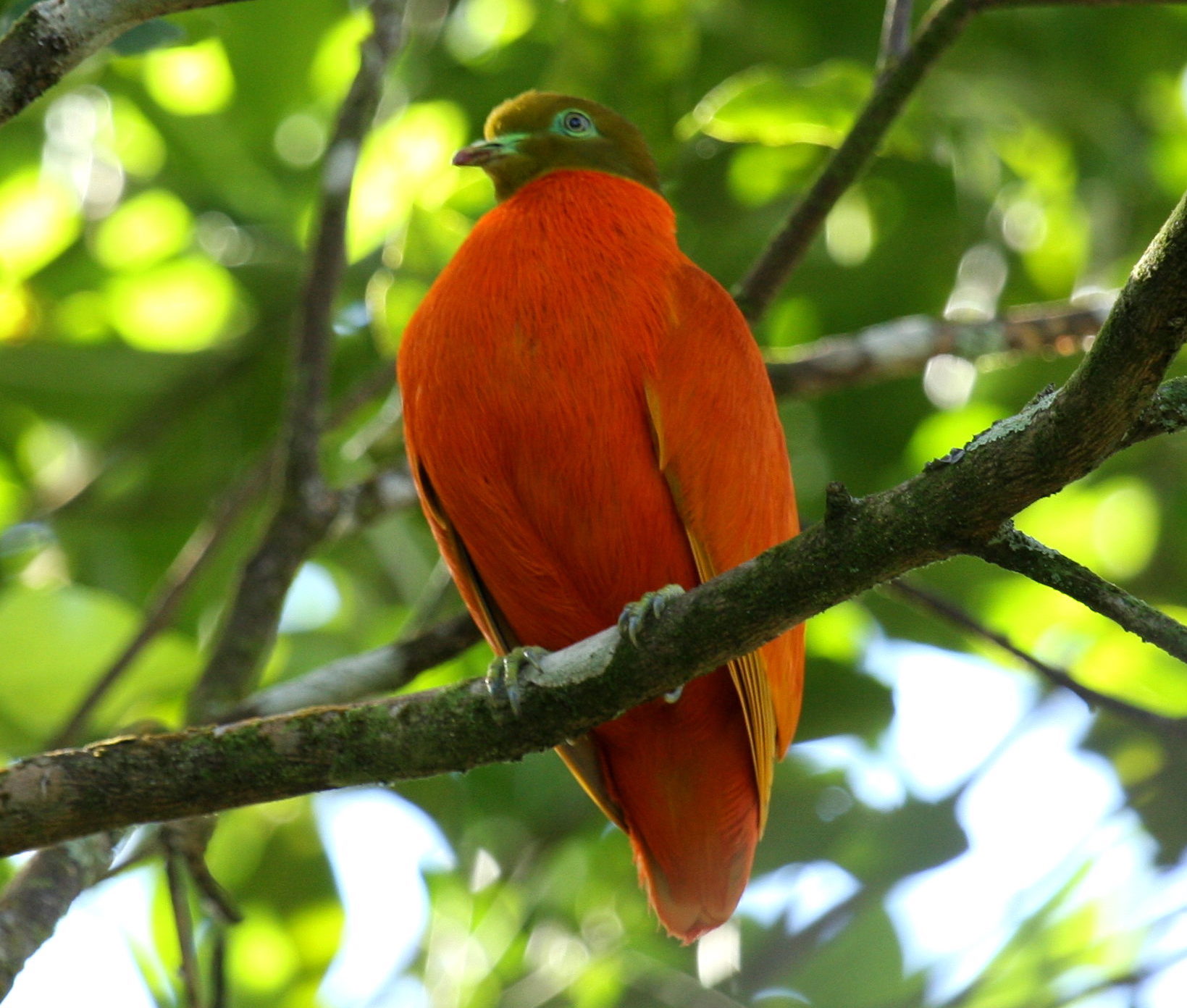
An orange dove in Fiji. © Aviceda / Wikimedia Commons These small, lurid-orange doves are only found on a handful of Fijian islands. They have an olive-green head and blue-green beak and orbital skin (the skin around the eye). Orange doves feed primarily on small fruits in forest habitats, especially primary forests on the mountain slopes.
Given their limited distribution and remote habitat, scientists know very little about this species.
-
Pheasant Pigeons
Otidiphaps nobilis | New Guinea

A pheasant pigeon. © Greg Hume / Wikimedia Commons The creatively named pheasant pigeon looks like, well, a cross between a pheasant and a pigeon.
These ground-dwelling birds are found in the forests of New Guinea and offshore islands. There are four recognized subspecies of pheasant pigeon — or species — depending on who you ask and how they define a species. (Each one has a different geographic distribution.)
New Guinea doesn’t have any true pheasants, so these pigeons evolved to fill that ecological niche. They feed on fallen fruits and seeds, and even nest on the ground.
-
Spinifex Pigeon
Geophaps plumifera | Australia

Australia’s spinifex pigeon. © Laurie Boyle / Flickr These desert-dwelling birds are unmistakable, with a tall, pointed crest, yellow eyes, and blue-gray, white, and red face markings.
Spinifex pigeons are found in rocky, arid areas in Australia. They are often seen near permanent water sources, where they will drink in small flocks along with other desert birds. They’re named after spinifex grasses, which grow in spikey, round mounds throughout arid Australia.
Spinifex pigeons are tough birds. They live in areas with little rainfall, where nighttime temperatures dip below freezing and daytime highs are some of the hottest on the planet.
-
Crowned-Pigeons
Goura sp. | New Guinea
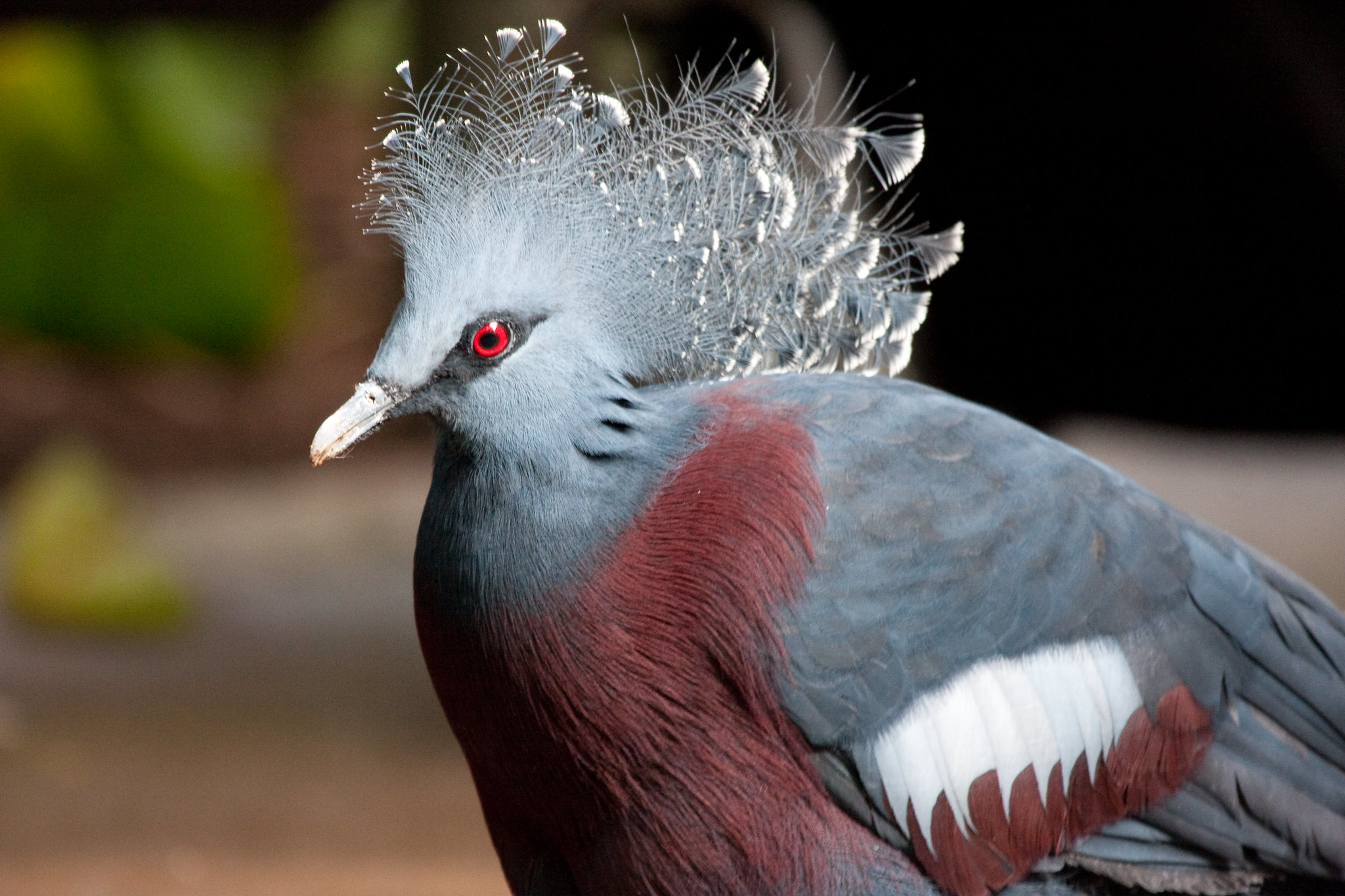
A crowned pigeon in New Guinea. © Nathan Rupert / Flickr Hang on to your hats, because crowned pigeons have some of the most striking plumage out there. Their grey, russet, and white feathers are subtle, compared to the colors of other species, but their “crown” of delicate head feathers is an absolute showstopper. (They remind me of miniature peacock tails.)
There are four species of crowned-pigeon, and all are endemic to New Guinea. They’re ground dwellers, like many other island pigeon species, and they eat seeds, fruits, and snails. The largest of the four species, the Victoria Crowned-Pigeon, can grow to more than 30 inches long with a weight of more than 7.5 pounds. That makes them the largest living pigeon species.
During breeding season, male crowned-pigeons establish dominance over one another by puffing up their chests, raising their wings, and rushing towards one another. Crowned-pigeons are threatened by human hunting and habitat loss from logging.
-
Blue Headed Quail-Dove
Starnoenas cyanocephala | Cuba
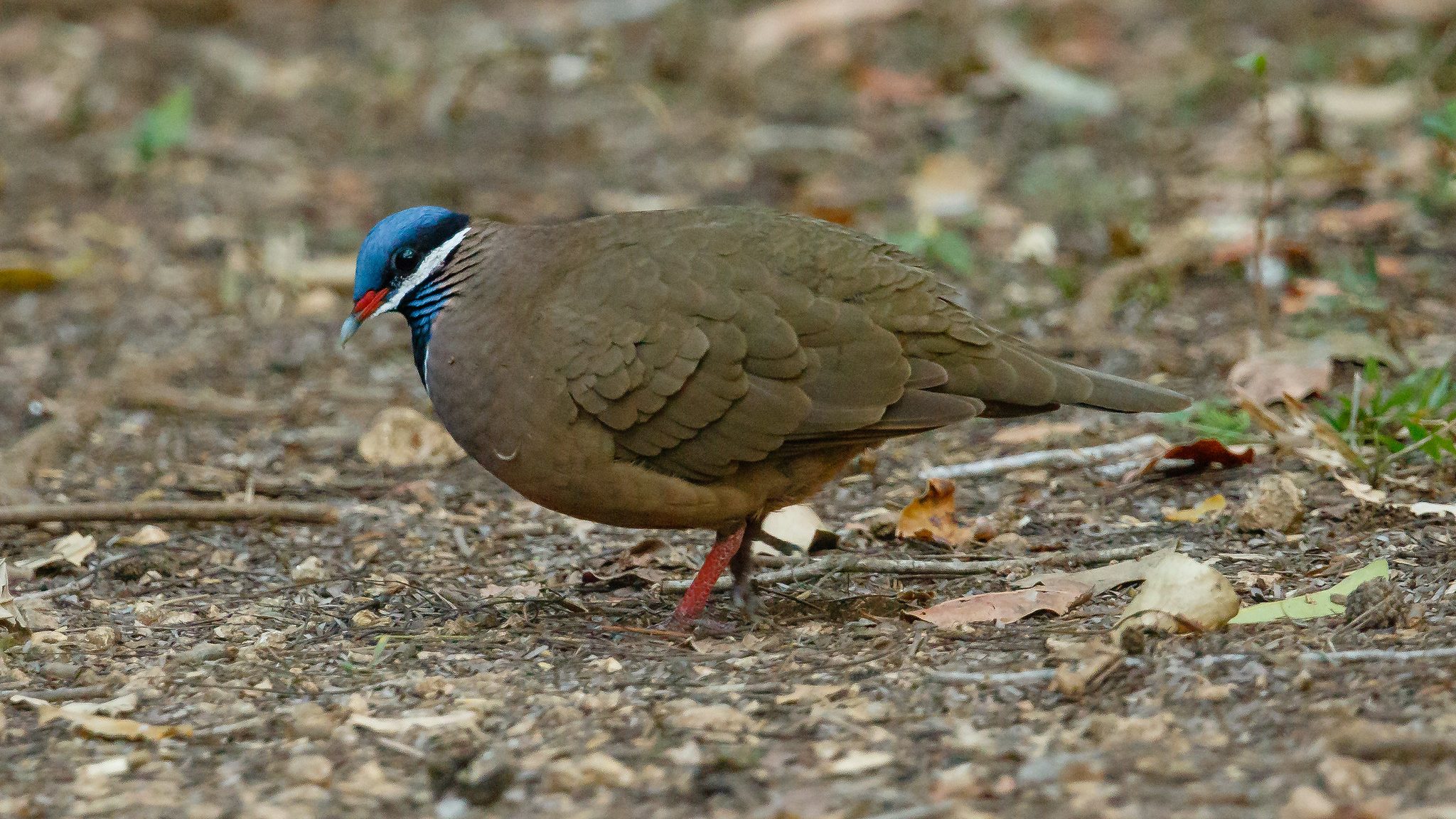
Cuba’s blue headed quail-dove. © PEHart / Flickr When it comes to plumage, pigeons and doves in the Americans tend are a bit more subtle than their Old World relatives. Most have feathers in various shades of brown, cream, russet, black, and gray. The blue headed quail dove fits this pattern, except for its electric-blue head and black-banded throat.
It’s the only species in the Starnoenas genus, which was created by the naturalist Charles Lucien Bonaparte, nephew to Emperor Napoleon I.
Blue headed quail-doves are found in lowland forests and swampy areas of Cuba. Once common, the species is now very rare and has been extirpated from much of its range due to illegal hunting and habitat loss.
-
African Green-Pigeon
Treron calvus | Sub-Saharan Africa
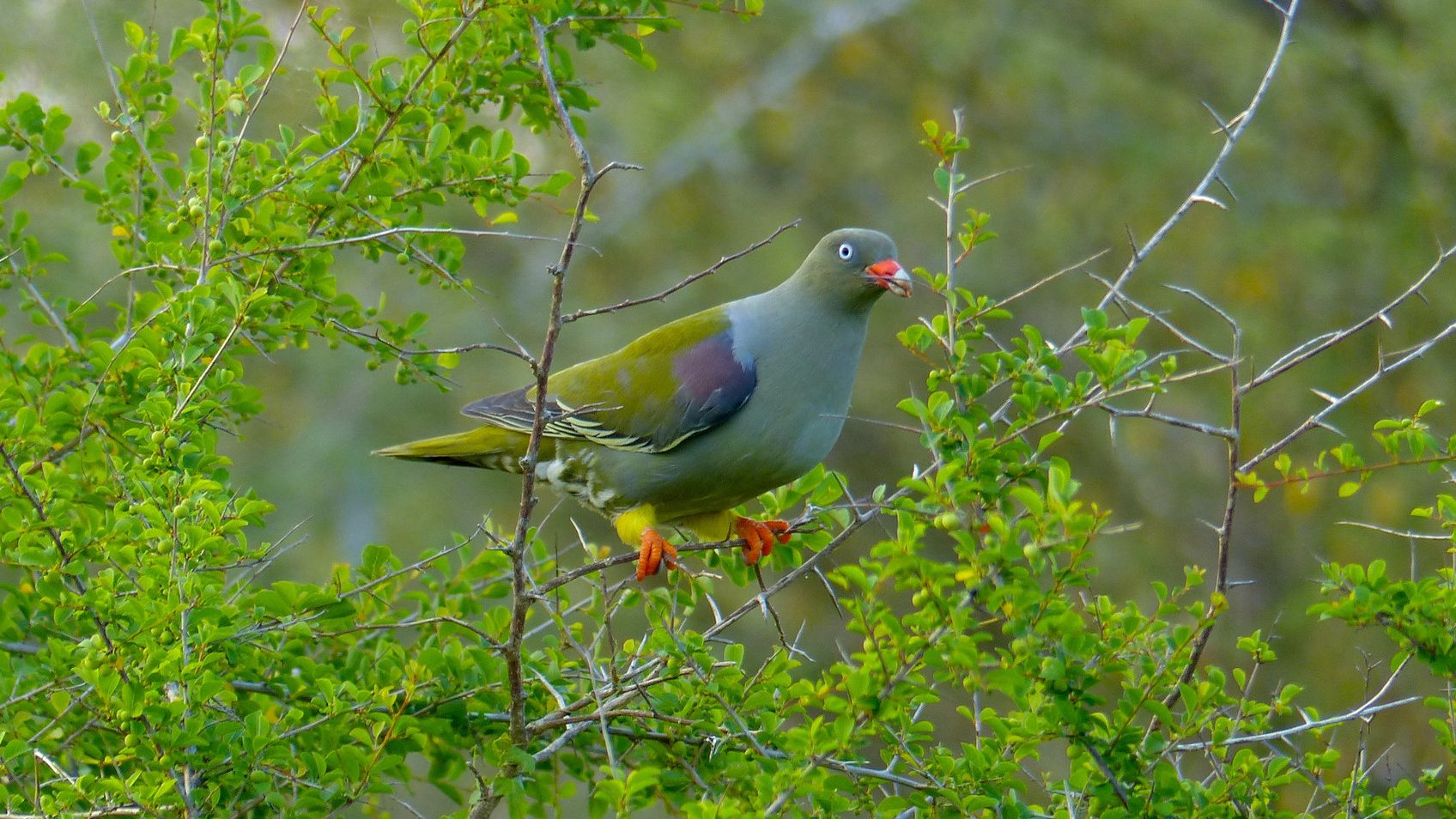
An African green-pigeon. © Bernard DUPONT/ Flickr With only a quick glance, you’d be forgiven for thinking this pigeon was a parrot.
The goofy-looking African green-pigeon has a deep olive-green plumage with purple shoulder patches, a periwinkle back, fluffy yellow legs, and an orange beak and feet. Groups often congregate in trees, where the birds clamber around, like parrots, feeding on fruit.
Found throughout Sub-Saharan Africa, they’re often detected by their vocalizations, which eBird describes as an amusing song of “whinnies, clicks, whistles, cackles, and growls.”
-
Flame Breasted Fruit-Dove
Ptilinopus marchei | Phillippines
Here’s another case of “someone spilled the paint” plumage. The flame breasted fruit-dove does have a flame-orange breast, but it also has pink feet, a pink head, and pink spots on the wings. They’re found in the lowland rainforests of Luzon, the largest island in the Philippines.
-
Seychelles Blue-Pigeon
Alectroenas pulcherrimus | Seychelles Islands
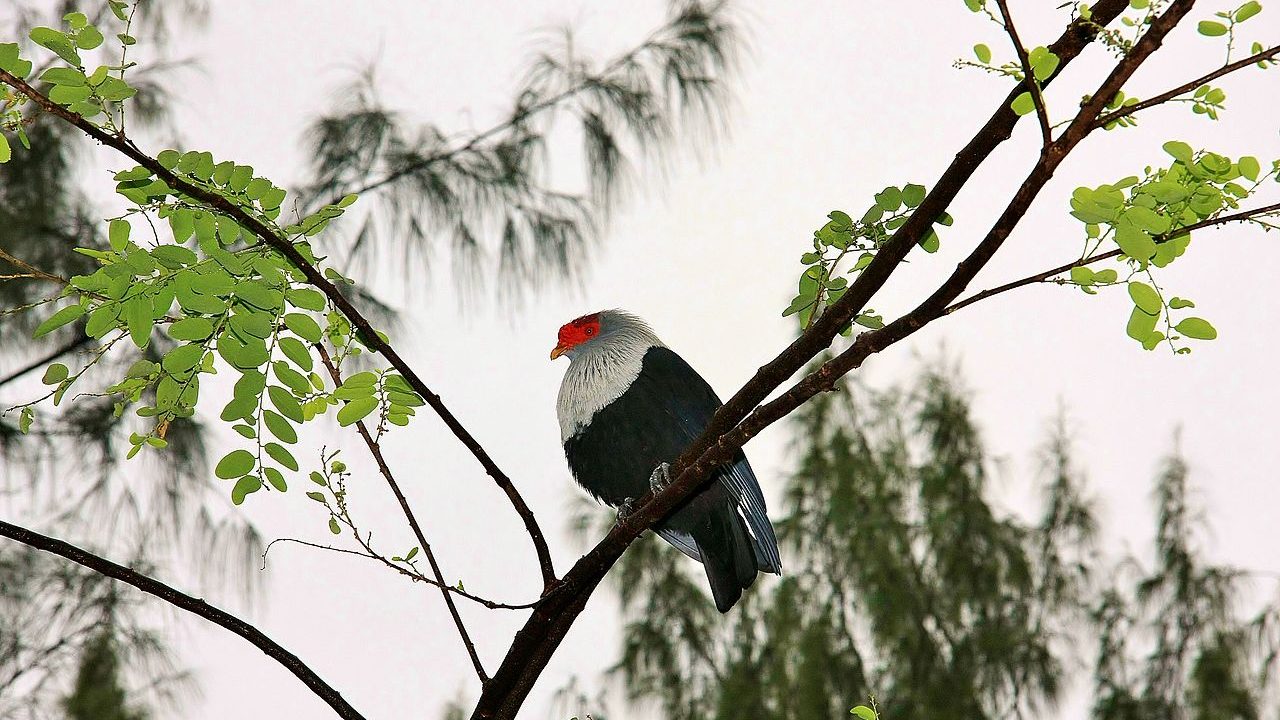
A Seychelles Blue-Pigeon. © Adrian Scottow / Flickr As their name suggests, this species is found on the Seychelles Islands, north of Madagascar. These pigeons have a deep blue plumage, a ruffle of silver-grey feathers around their head and necks, and a striking crimson skin around their eyes and forehead.
During courtship, birds “birds fly steeply upward before gliding down with their wings held stiffly down.” Males then perform a bowing and cooing display before females.
Seychelles blue-pigeons were once hunted for food, and the birds became quite rare by the 1970s. Thanks to conservation efforts, the population has recovered and the birds are now quite common on some islands.
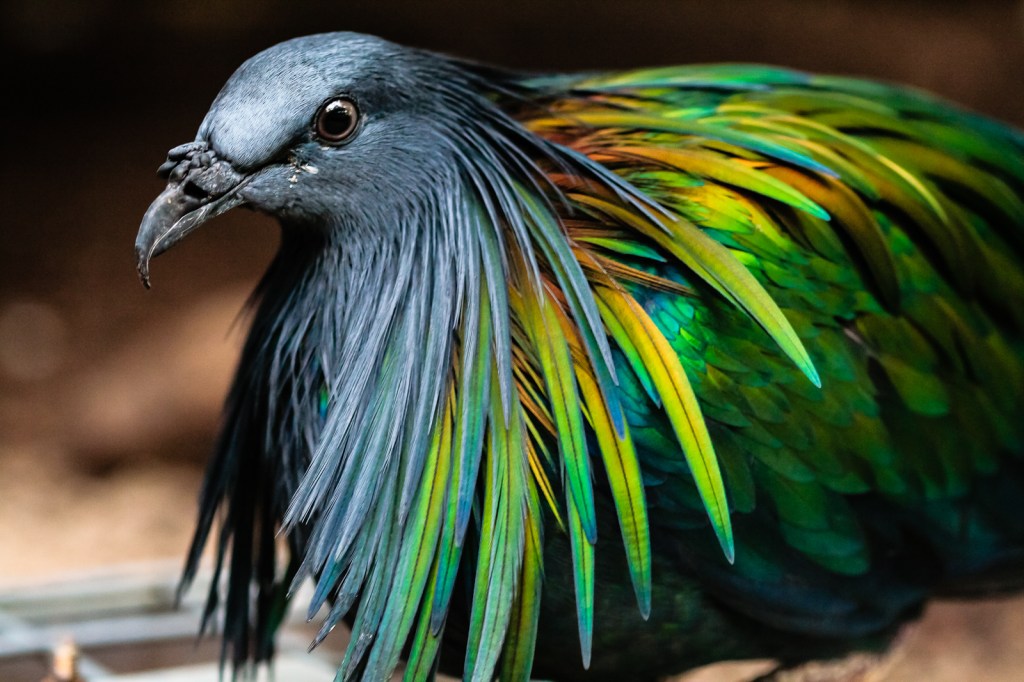



Join the Discussion